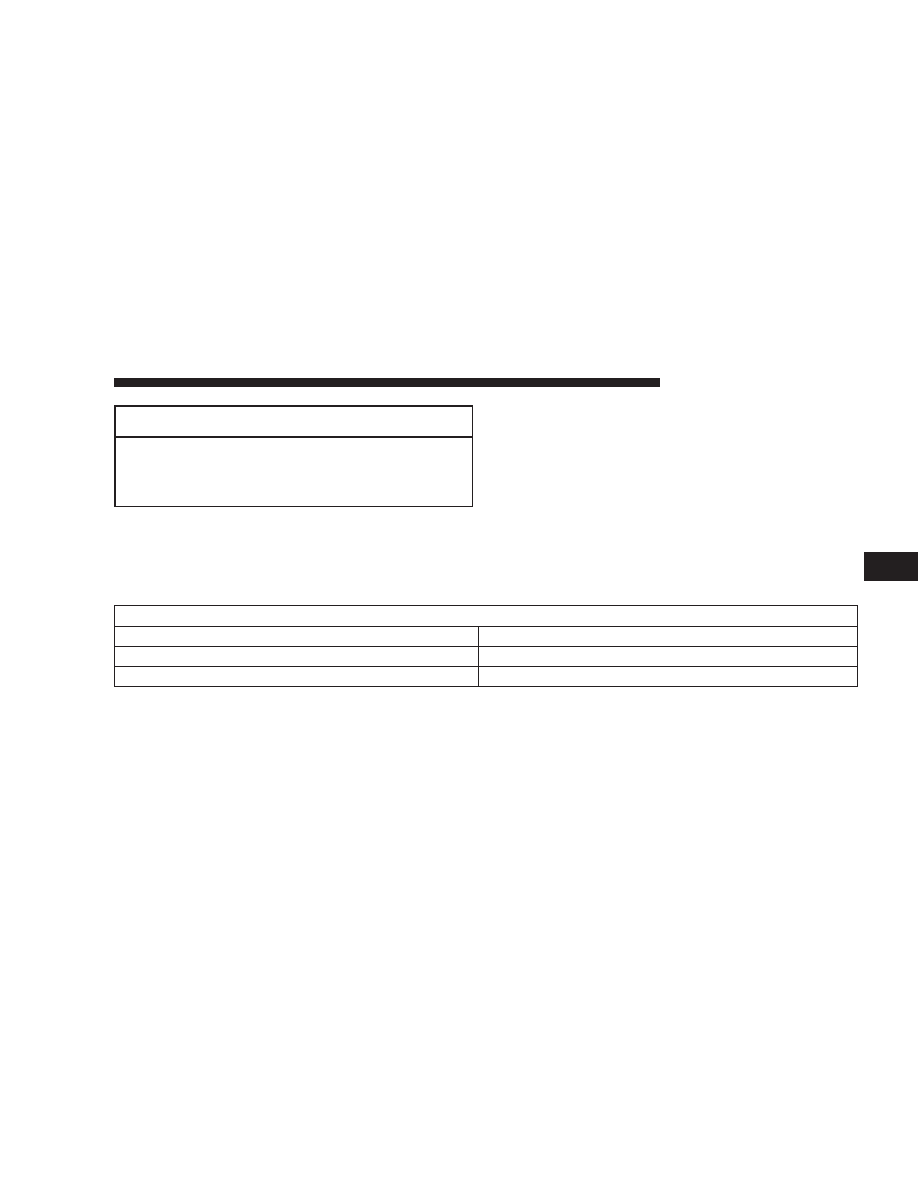Dodge Neon Srt4 (2005 year). Manual - part 7

CAUTION!
To prevent damage to the starter, do not crank the
engine for more than 15 seconds at a time. Wait 10 to
15 seconds before trying again.
After Starting
The idle speed will automatically decrease as the engine
warms up.
Turbocharger “Cool Down”
NOTE:
Letting the engine idle after severe operation
allows the turbine housing to cool to normal operating
temperature.
The following chart should be used as a guide in deter-
minning the amount of engine idle time required to
sufficiently cool down the turbocharger before shut
down, depending upon the type of driving and the
amount of cargo.
TURBOCHARGER
ⴖCOOL DOWNⴖ CHART
Driving Conditions
Idle Time (in minutes) Before Shut Down
Normal Driving
Not required.
Aggressive Driving or Heavily Loaded
3
STARTING AND OPERATING
97
5